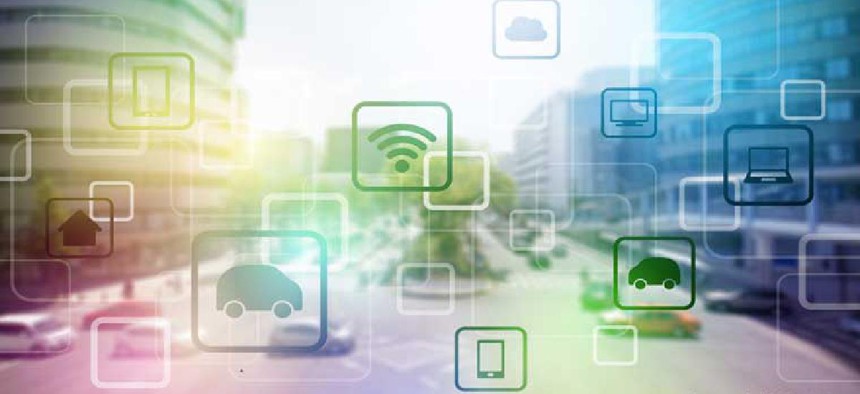Get smart: How data is changing the way we move around cities


Connecting state and local government leaders
New technologies can help governments improve the way citizens travel by providing convenient, fast and cost-effective mobility.
From global mega-cities to mid-size regional centers, urban populations continue to grow, causing strain on energy and transportation infrastructure and public services such as health care. Visionary leaders are embracing the challenge to innovate city ecosystems as they compete for businesses and talent. Smart cities will be those that simultaneously improve quality of life and foster economic growth. They invest in intelligent digital solutions that align with the strategic livability and prosperity goals and engage with high-tech partners that empower data-driven business model innovation to reimagine public services and urban sustainability.
Integrated mobility is an industry mega-trend that encompasses many aspects of how citizens and businesses connect to their cities. The future of city mobility will be connected, autonomous, shared and electric. Moving people and goods around the city will be seamless, safe, easy, clean and sustainable. City governments and public transit authorities will collaborate with car makers and ride-hailing services to understand travel patterns and then use those data insights to improve traffic. Citizens will be empowered to choose the most convenient multi-modal routing and ticketing options, and logistic providers will be able to optimize last mile delivery.
Intelligent mobility
New technologies can help governments improve the way citizens travel by providing convenient, fast and cost-effective mobility. And they can help attract new businesses to the area, giving corporate mobility managers peace of mind when hiring innovative talent. As Amazon’s search for a second headquarters illustrates, commuting options are a key factor in business decisions.
City planners are seeking methods to make it easy to move around without investing in a costly infrastructure or information systems overhaul. Cloud platforms and analytic applications offer an economical means of managing transportation data and solutions, creating insights that deliver more efficient and safer traffic routes on roads that already exist. Machine learning applications that pull data from connected devices can provide real-time updates to travelers through smart phone applications, making traveling smarter, easier and more engaging for tourists and citizens.
The city of Nanjing, China, has installed sensors into 10,000 taxis, 7,000 buses and 1 million private cars. The resulting data is transferred daily to the Nanjing Information Center, where experts are able to centralize and analyze traffic data and send updates to commuters on their smart phones. With these data insights, government officials have created new traffic routes to improve congestion, without spending money on new roads.
Trenitalia, Italy’s major rail operator, has over 7,000 trains in its fleet and wanted to create a solution to more quickly address maintenance problems. The company installed sensors on the trains and now gets real-time status updates on the mechanical condition of each train and maintenance predictions that allows Trenitalia to plan a course of action ahead of an unfortunate event. These technological innovations provide travelers with a reliable system and service, while allowing cities to prevent major disruptions.
Government officials who invest in intelligent digital solutions that enable new business models, reimagine travel routes, ease congestion, improve safety of travelers and cut down on costly and disruptive infrastructure construction can build a smarter, more livable city.

NEXT STORY: Giving workers the power to automate




